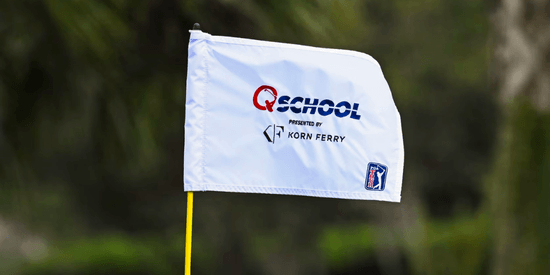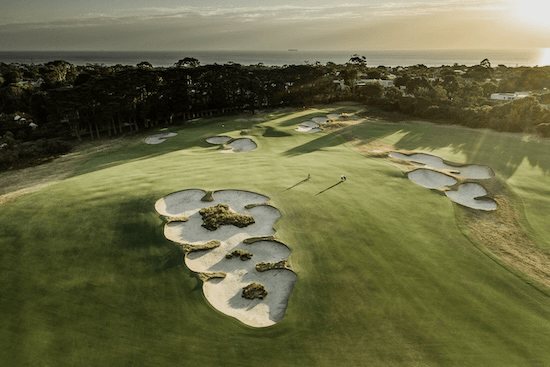Sequoyah Country Club Review and Playing Notes
7/25/2012 | by Pete Wlodkowski of AmateurGolf.com
see also: Sequoyah Country Club, All Course Reviews

Sequoyah Country Club, hidden in the Oakland Hills, is a true gem of Bay Area golf
I’ve lived in Carlsbad for more than 10
years, but I still miss the little gems of Bay
Area
golf, especially my former home club –
Sequoyah Country Club of Oakland. With the
USGA Mid Amateur qualifying set to be played
at this little slice of history, I figured it was
time
to draft a review and a few playing notes. I
won the Club Championship there in 2000 and
2001, and although the format was match play
I figure I’ve got hundreds of rounds under my
belt there and should be able to provide you a
little “local knowledge.”
So let’s start with the big picture. Sequoyah
is
about to turn 100 in 2013. It’s one of the 10
original clubs in the NCGA. At 6000 yards, par
70, it seems short, but I bet 70 makes it into
the Mid-Am easily. I hope to give you a few
positive ideas – if you really care about making
it you will play what I consider a mandatory
practice round.
Before we talk about scoring let me get one
thing out of the way. The club (as you might
guess from its spelling) isn’t named for the
tree.
It’s named for Chief Sequoyah of the Cherokee
Nation, who created a syllabary that made
reading and writing in Cherokee possible. But
don’t worry, you’ll find a few Sequoias of the
redwood variety here. (Those behind the par-3
14th are particularly unforgettable.)
So what’s the secret to scoring at
Sequoyah?
The primary answer lies in the size, speed,
and
slope of the greens. Assuming you can keep
your tee ball in play, you will seldom face long
approach shots, but you’re going to need to
control your distance and spin to have
realistic
birdie chances from below, or close to, the
hole. (Both would be really nice!)
An equally important secret to
Sequoyah is
scoring on the par-3s. I used to find it
frustrating that the only mid/long iron shots I
would typically hit into greens at Sequoyah
were on these holes, but if you are a strong
iron
player, this is the place to take advantage of
it.
On the par-4s and 5s, the decision on what
to
hit off of each tee is of course up to you and
what suits your game. Play a practice round!
The longer you are the more you can keep the
driver in your bag. For my “hole by hole” I’m
going to start with those holes, giving you a
quick strategy on each before closing with my
notes on Sequoyah's five awesome par-3s.
No. 1 – “Ridge” – 311 yards, Par
4
Other than being the first hole on the course,
it’s the easiest par-4. I used to love to rip a
driver at the right side of the green (there is
some light rough to bail out into) but you could
easily play a fairway wood to the top of the
hill
and have a 75 yard shot in. Try both in a
practice round to see what suits your eye. If
the
greens are firm, be cautious on where you
land
your approach.
No. 3 – “Ananias” – 400 yards, Par
4
No reason to hit driver here if you are long,
but if you don’t hit it 270 plus I would take
driver up the left side. Why? If you’re behind
150 yards you could have a blind shot into this
small, well bunkered green.
No. 4 – “South Pole” – 374 yards, Par
4
An obvious layup off the tee, using a
mid/long
iron or hybrid depending on your length, but
keep it down the left side to avoid a large
pine.
The uphill approach requires ½ club more;
again
it’s something you need a practice round to
figure out. The back right pin can be brutal.
No. 6 – “Long Tom” – 528 yards, Par
5
Hit a driver or 3-wood down the left side, a
little cut for the right hander would be
perfect.
If you do get caught up on the right, it’s best
to
be smart and get down the fairway before
wasting time bouncing around the huge
Eucalyptus trees. Not reachable in two for
most
players, so give yourself a reasonable yardage
and wedge in for a birdie putt.
No. 7 – “Corner” – 329 yards, Par 4
This will be the tightest hole on the front
nine,
take a hybrid or three wood down the left
center and you will have a nice chance to
attack the elevated green.
No. 8 – “Rubicon” – 389 yards, Par
4
If the tee is back at the highest point, most
players can hit driver without going past the
crest of the hill and into the barranca that
fronts the green. But if the tee is up, almost
everyone should hit something in the 230-240
yard range to stay back of the barranca,
giving
150 or less into the green. NOTE: This is a
green to attack cautiously. I have had 6 foot
putts from above the hole that were either
‘make or run 20 feet past and off the green’ –
also this hole is a great example of one of the
ways to play Sequoyah smart. If you are out
of
position, like in a bunker above the pin, don’t
be
a hero and try to hit the perfect shot,
dribbling
over the lip and releasing to the hole. Give
yourself an uphill putt for par, and take bogey
at
the worst. It took me a while to figure that
out…
No. 9 – “Half Way” – 348 yards, Par
4
Hit an iron or hybrid into the fairway, and
you’ll
still only have a wedge into this green.
Especially if the pin is back, be smart with
your
approach. The hedges and parking lot long
aren’t good. I am pretty sure the driving
range,
to the left of the tee, is IN bounds, but check
your local rules. Playing from there actually
isn’t
that bad.
No. 10 – “Saddle” – 380 yards, Par
4
Here is a hole that requires you to pick a club
and target and commit. Anything right tends
to
drift towards a hazard and even if it’s safe
you
will have a tough shot. Unless it’s super windy
(as in the wind off the bay into your face) I
would hit a fairway metal to the bottom of the
hill and approach the elevated green with a
short iron. As with the drive, check the wind.
No. 11 – “The Burn” – 445 yards, Par
4
Most players should hit driver on the longest
of
Sequoyah’s par-4s. Similar to the 10th, you’ll
want to keep it up the left side. You can’t
control what you do with every shot, and if
you
DO find yourself in the trees on the right think
twice about being superman, especially if your
round is ok. Punch out short of the stream
that fronts the green. This green can run
pretty
fast and firm.
No. 13 – “Dome” – 337 yards, Par
4
Hitting out of a chute to a strategically
bunkered fairway requires you to pick a spot
and know your distance. Many players can
clear
the bunkers and have a short pitch shot in to
this longish green, depending on the wind.
NOTE: As I’m “mentally playing” Sequoyah,
I’m wondering if it was really this easy? The
answer of course is no. I’m thinking of my best
shots, not the ones that caught a limb off the
tee, or the punch-outs that led to disaster.
The
days when bogey was my highest score I
seemed to always score well, because there
are
many birdie chances at good-ole Sequoyah.
Choose power over strategy, and beware the
potential outcome.
No. 15 – “Come Back” – 330 yards,
Par 4
This was always my favorite driving hole on
the course, even though you don’t really
“need” it. There is plenty of room, and the
uphill
fairway suited my eye so well that I would just
let it go here and most often find the fairway.
The 75 yard approach to a semi-blind green is
a
little tricky, but I have made three eagles
here
(once on the fly) so I know you can make
birdie. Give yourself an uphill putt, over isn’t
good.
No. 16 – “The Pond” – 482 yards,
Par 5
Some players will get to this hole with their
round in questionable status and try to get
home in two, but a veteran member gave me
my best advice here. Just play it as a three
shot hole. Every time. It’s not that the driving
area is overly tight; it’s that the second shot
(even if you get it inside of 200 yards) is
completely blind with a pond in front and a
super-tricky green. Much better to lay up to
100 yards, see where the pin is and wedge in.
No. 18 – “Styx” – 450 yards, Par 5
“The friendliest par-5 in golf.” That’s what I
used to call No. 18 (what’s not to like about a
450 yard par-5?) Here you can cap off a great
round with an insurance birdie if you play it
smart. A left-to-right ball flight, or at least
straight, works well out of the chute on a tee
box that is shared with No. 4. (It’s tough to
play a draw with a tower of trees guarding
the
right side.) Depending on your distance a solid
drive could leave you 200 yards or less. (My
longest drive ever left me 150… it might have
hit a sprinkler head.) The green is small, and
elevated, but if you’re in position it’s worth
having a go. Just don’t get crazy with it
because
it’s o.b. way left or over the green on the
driving range. If your wedge game is your
strength, or you’re just out of position of the
tee, avoid the cross-bunker about 50 yards
from the green and lay-up, leaving an easy
sand/lob wedge shot in.
PAR-3s
No. 2 – “Cleekie” – 191
yards
Check the wind, and err on the short side.
The
green is wide – a good shot will be rewarded
however no matter where you are on this
green
if it’s fast you’ve got to respect the speed.
No. 5 – “Shorty” – 137
yards
A short, steeply downhill par-3 with a back-
to-
front sloping green; the 5th is the most
important “spin control” hole on the course.
One member, a scratch player, used to punch
a
7-iron to take the spin off and while I wouldn’t
recommend that I would recommend a punch
shot or left to right ball flight. Tiger Woods
would eat this hole up. You can too. Play
plenty
of break on this green.
No. 12 – “Potato Patch” – 172
yards
The downhill shot to a narrow green may be
the easiest of the par 3’s; I think you’ll have
lots of success here just picking the right club
and trusting it. Watch the wind. It looks like
you
could throw a ball there, but the hole plays a
little longer than it looks.
No. 14 – “Paradise” – 238
yards
One of the best par-3’s in the Bay Area,
you’ve simply got to pick your 200-yard plus
club and knock it on. I remember when I first
was amazed at the new Pro-V1 when it came
out in 2000; I was able to reach the putting
surface with a 3-iron. I’m not sure exactly
what
club you will need, but I’m guessing it’s a
hybrid
for most players. (Do you still carry a 3-iron?)
The stand of redwoods behind the green
provides a stately beauty to the 14th. Even if
you bogey this hole you’ve got a short par-4
and two par-5s to close out your round.
No. 17 – “Grief” – 220 yards
Another stunner, this par-3 could be picked up
and placed anywhere in the world. If he’s still
alive, the German Sheppard that lives on a
decked house above the tee will surely bark in
your backswing. I once got into a shouting
contest with him. (He laughed, I made triple.)
If
I was running the qualifier I would put the tee
in
the middle position, but if it’s back you’re
hitting
200-plus yards out of a tight chute. The tee is
placed towards the front, the hole plays much
easier and your task is hitting a solid mid/long
iron shot to the proper portion of sloping
green.
If the pin is on the shelf on the right,
approach
it with caution. Even a 20-30 footer uphill putt
to that pin position would be good if your
round
is going well. Take par, get out.
I hope my notes help you to score better. If nothing else, take my advice and if you're serious about giving yourself a chance at Sequoyah, play a practice round before the USGA qualifying, or any competitive event.
Most Popular Articles

2025 PGA TOUR Q-School Guide: Sites, Scores, and Who Advanced
Dec 5, 2025Second Stage is complete and Final Stage awaits at Sawgrass — follow every Q-School leaderboard and the players still chasing
2025 LPGA TOUR Q-Series: Final Qualifying Stage FINAL SCORING
Dec 8, 2025Helen Briem earns medalist honors, 31 players headed to the LPGA next year
Australian Open at Royal Melbourne: Preview, amateur bios, and how to watch
Nov 30, 2025Rory McIlroy headlines one of the championship's top fields in years - at least four amateurs will have their chance at glory
Luke Ringkamp Cruises to Rolex Tournament of Champions Title at TPC San Antonio
Nov 26, 2025One week after committing to Pepperdine, Luke Ringkamp won the Rolex Tournament of Champions by nine shots.Inside Gil Hanse’s Restoration of Baltusrol’s Upper Course: A Return to Tillinghast’s
Dec 11, 2025Renowned architect Gil Hanse reveals how he brought Baltusrol’s Upper Course back to life by honoring A.W. Tillinghast’s originalLoading latest news...
